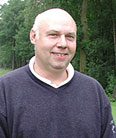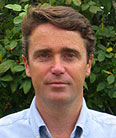Contact Us
- 1 Parklands Hamsterley Mill Rowlands Gill NE39 1HH
- Tel/Fax: +44 (0) 191 384 2556
- Mobile: 07967 818 719
Useful Links
- Please Click Here to view our useful links
Latest News
Chester le Street Golf
Before and after ...Read more
The Team
Golf Course Design

John Nicholson

Ken Moodie
John Nicholson
John Nicholson has over the past years worked on over 400 golf courses, giving advice on trees and woodlands, conservation management and habitat restoration.
John has written a number of articles for magazines including Greenkeeper International, The Golf Club Secretary and Bunkered. He has given lectures at BTME at Harrogate, the London Tree Forum, The English Golf Club Union Road Show and the NW BIGGA conference at Mere, NGF Dutch Golf Federation as well as Country Golf Unions and other associated bodies.
John's philosophy is simple:-
'On established layouts it is essential to maintain the 'genius loci' of the landscape and our management prescriptions always reflect this.'
The character of a course can often be changed unintentionally though lack of management, i.e. regeneration blocking scenic views, infringing on play or by woodland encroaching onto an inappropriate site such as a heathland or links course, where the natural ecology which attracted golf in the first instance will be destroyed.
Woodland management and conservation are often the bottom of the list of priorities for golf club committees as it is often mistakenly thought that the environment will manage itself. Unfortunately this is not the case and it should be noted that there is a great difference between conservation and preservation. You cannot preserve a landscape or golf course as it is a living entity and will naturally change over time. you can however conserve it in a desirable state by management'
John co-ordinate’s projects and the collaboration of the three parties will allow clients to mix and match the expertise available to suit their requirements.
Always aware of the need for specialist advice John has recruited the help of ecologists Mike Edwards and Barry Anderson to assist in Conservation Management.
Courses they are presently working on include, Sunningdale, St. George’s Hill, Royal Wimbledon, Woking, North Hants, Royal Lytham & St Annes, Moortown, Golf Wouwse Plantage, Hollinwell.
Ken Moodie
Ken Moodie, has 13 years experience working as a golf course architect both at home and on teh international stage. He holds a BA(honours) Degree in Landscape Architecture and is a full member of the European Institute of golf course architects. In addition to the new golf developments, he has provided design expertise and advice for a large number of golf clubs including two British Open Championship courses.
This Experience, together with his Scottish origins, have been instrumental in developing his design philosophies which tend towards traditional values rather than following American influences.
During his 13 years in Golf Course Architecture, Ken has been involved with a wide variety of projects in the UK and further afield in countries such as Hungary, Belgium, Denmark, Holland and Spain. His experience ranges from the design and supervision of new developments of 9, 18 and 36 holes, to advising on the remodelling of established golf courses. He worked closely with Martin Hawtree on the reconstruction of all 18 greens and two new tees at Royal Birkdale Golf Club in preparation for the Open Championship in 1998. More recently he collaborated on the design of the new Millennium Course at Vilamoura, Portugal, and Wychwood Park golf development in Crewe, UK which was designed to PGA European Tour standards as part of the planning brief.
Ken has been involved in teaching prospective golf course architects via the EIGCA's Professional Diploma course which he helped to establish and run between 1997-2002. He has also lectured to golf design students at Heriot Watt University, over a number of years, and has taken part in seminars at the Clubhouse Exhibition at the NEC in Birmingham, the Excel Exhibition in London, and for the English Golf Union at Sandiway Golf Club. He also spoke on the subject of Golf, Housing and the Environment at the EIGCA Conference at Queens College, Cambridge in 2001.
'Through working and playing on courses designed by some of the great classical architects, such as Colt, Mackenzie, Simpson and Fowler, I have come to recognise the value of working in close harmony with the natural landscape and utilising the existing site features to their best advantage. These architects understood hoe to get the most from the limited earth movement which they undertook, as it required a great effort of both horse and manpower and this lesson can be applied to new golf developments, while taking advantage of the benefits of modern machinery and construction techniques. In addition, great care must be taken when remodelling these old courses to ensure that their distinctive character and charm is not sacrificed whilst reinstating the strategies which have been lost as a result of modern club and ball technology'










